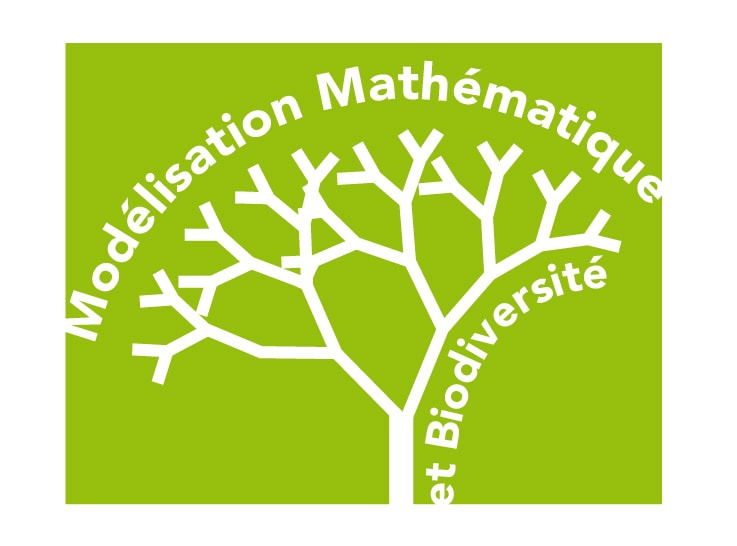|
THEMATIC MONTH on Mathematical Issues in Biology
MOIS THEMATIQUE: Mathematical Issues in Biology 3 February – 6 March 2020 Local coordinators
Coordinateurs locaux François Hamel (Aix Marseille Université) contact: mathsbiomonth@sciencesconf.org |
|
This residential month is along the lines of former sessions organized at CIRM each February since 2001 by a group of Marseille researchers. In February 2020, the members of the Institute of Mathematics of Marseille involved in collaborations with biologists propose to gather researchers from around the world, at CIRM, around the theme of Mathematical Biology. The interplay between mathematics and biology has developed rapidly since the last decades of the 20th century, both in France and in all developed countries. Progress in biological science requires mathematical modeling, while the increased quantity of available data makes it possible to compare models with reality, and requires a lot of statistics. This is true at all levels of life. The evolution of species, their interactions among themselves and with their environment, ecology and the condition for maintenance of biodiversity are major fields where biologists, mathematicians and statisticians interact. Furthermore, emerging epidemics (such as AIDS, H1N1, EBOLA, etc.) and the development of antibiotic resistance call for progress in the mathematical modeling of epidemics, and in the interplay between their dynamics and the evolution of viruses.
While medicine has made huge progress in recent history, society requires better still treatments for cancer. Another challenge faced by medicine is to adapt each treatment to the specific characteristics of each patient. This requires mathematical modeling and statistics. Interaction networks are crucial in everyday life, and their size calls for mathematical modeling, while making it particularly challenging. Here, the high complexity behind any realistic model for biology is particularly obvious. In all areas of mathematical biology, a simplified model is the first step, and, like in physics, the simplest, very idealized models are often the most useful. However, the high complexity of realistic models makes it necessary to combine various mathematical tools. Those who want to make significant contributions to mathematical biology should be ready to use a big variety of mathematical techniques, ranging from analysis (in particular ODEs and PDEs), to probability and stochastic processes, not to mention statistics. However, many younger colleagues are trained in only one of those three fields. This is why this thematic month will start off with a research school on ODEs, PDEs, Probability and Statistics. A minimal knowledge of those areas of applied mathematics is recommended for any mathematician wanting to work at the interface with biology. The research school will be followed by three conferences gathering the ODE, PDE, Probability and Statistics communities. A final research school on networks will close this five-week event. |
Ce mois résidentiel s’inscrit dans la continuité des précédentes sessions organisées au CIRM en février de chaque année depuis 2001 par un groupe de chercheurs marseillais. En février 2020, les membres de l’Institut de Mathématiques de Marseille engagés dans des collaborations avec des biologistes proposent de réunir au CIRM des chercheurs du monde entier, autour du thème de la biologie mathématique. L’interaction entre les mathématiques et la biologie s’est développée rapidement depuis les dernières décennies du XXe siècle, tant en France que dans tous les pays développés. Les progrès de la biologie nécessitent une modélisation mathématique, tandis que la quantité croissante de données disponibles permet de comparer les modèles à la réalité et nécessite beaucoup de statistiques. C’est vrai à tous les niveaux de la vie. L’évolution des espèces, leurs interactions entre elles et avec leur environnement, l’écologie et la condition du maintien de la biodiversité sont des domaines majeurs où les biologistes, les mathématiciens et les statisticiens interagissent. Par ailleurs, les épidémies émergentes (sida, H1N1, EBOLA, etc.) et le développement de la résistance aux antibiotiques appellent à des progrès dans la modélisation mathématique des épidémies, et dans l’interaction entre leur dynamique et l’évolution des virus.
Alors que la médecine a fait d’énormes progrès dans l’histoire récente, la société a besoin de traitements encore meilleurs pour le cancer. Un autre défi pour la médecine est d’adapter chaque traitement aux caractéristiques spécifiques de chaque patient. Cela nécessite une modélisation mathématique et des statistiques. Les réseaux d’interaction sont cruciaux dans la vie de tous les jours, et leur taille nécessite une modélisation mathématique, tout en la rendant particulièrement difficile. Ici, la grande complexité de tout modèle biologique réaliste est particulièrement évidente. Dans tous les domaines de la biologie mathématique, un modèle simplifié est la première étape et, comme en physique, les modèles les plus simples et les plus idéalisés sont souvent les plus utiles. Cependant, la grande complexité des modèles réalistes rend nécessaire la combinaison de divers outils mathématiques. Ceux qui veulent apporter une contribution significative à la biologie mathématique doivent être prêts à utiliser une grande variété de techniques mathématiques, allant de l’analyse (en particulier les EOD et les EDP) à la probabilité et aux processus stochastiques, sans parler des statistiques. Cependant, de nombreux collègues plus jeunes ne sont formés que dans un seul de ces trois domaines. C’est pourquoi ce mois thématique débutera par une école de recherche sur les EOD, les EDP, les probabilités et les statistiques. Une connaissance minimale de ces domaines des mathématiques appliquées est recommandée à tout mathématicien désireux de travailler à l’interface avec la biologie. L’école de recherche sera suivie de trois conférences réunissant les communautés ODE, PDE, Probabilité et Statistique. Une dernière école de recherche sur les réseaux clôturera cet événement de cinq semaines. |
|
Research School / Ecole de recherche
PDE and Probability for Biology EDP et probabilité pour la biologie 3 – 7 February 2020 |
|
Conference
Mathematical Models in Evolutionary Biology Modèles mathématiques en biologie de l’évolution 10 – 14 February 2020 |
|
Conference
Mathematical Modeling and Statistical Analysis of Infectious Disease Outbreaks Modélisation mathématique et analyses statistique des épidémies de maladies infectieuses 17 – 21 February 2020 |
|
Conference
Mathematics of Complex Systems in Biology and Medicine Mathématiques des systèmes complexes en biologie et en médecine 24 – 28 February 2020 |
|
Research School / Ecole de recherche
Networks and Molecular Biology Réseaux et biologie moléculaire 2 – 6 March 2020 |






















